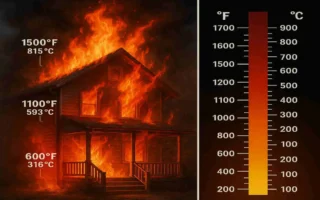Home wiring is the backbone of any residential electrical system. It’s what powers our lights, appliances, and devices, ensuring our homes function safely and efficiently. While the prospect of tackling this task yourself may seem daunting, with the proper knowledge and precautions, you can successfully wire your own house.
Understanding Home Wiring Basics

What is Residential Electrical Wiring?
Residential electrical wiring is the network of wires, cables, and devices that distribute power throughout your home. It’s the invisible infrastructure that keeps your lights on, your appliances running, and your devices charged.
Key Components of Home Wiring
To wire your own house, you need to understand the essential components of a residential electrical system:
- Circuit Breakers: These devices protect your wiring from overloads and short circuits by interrupting the flow of electricity when necessary.
- Wires: The conductors that carry electrical current throughout your home. Common types include NM cable and THHN wire.
- Outlets: The points where you plug in your devices and appliances.
- Switches: Devices that allow you to control the flow of electricity to specific fixtures or outlets.
- Panels: The central hub of your electrical system, where all the circuits connect and power is distributed.
Types of Wires Used in Houses
When wiring your home, you’ll encounter different types of wires, each with its own purpose:
- NM Cable: Also known as Romex, this is the most common type of wire used in residential settings. It consists of two or more insulated conductors and a bare ground wire.
- THHN Wire: A kind of single-conductor wire often used in conduit systems or when running wires through walls.
Electrical Amperage and Voltage Basics
To safely wire your home, you need to understand the basics of electrical amperage and voltage:
- Amperage: The measure of electrical current flowing through a circuit. It’s essential to ensure your wiring can handle the devices’ amperage.
- Voltage: The measure of electrical potential difference. In the US, most residential systems operate at 120/240 volts.
Importance of a Well-Designed Wiring System
A house well-designed wiring system is crucial for both safety and functionality. Proper planning and execution can help prevent electrical fires, reduce the risk of electrocution, and ensure that your home’s electrical needs are met efficiently.
Legal and Safety Considerations for DIY Wiring
Local Electrical Codes and Regulations
Before you start wiring your own house, it’s essential to familiarize yourself with local electrical codes and regulations. These rules are in place to ensure the safety of your home and its occupants.
Permits for Wiring Work
In most jurisdictions, you’ll need to obtain permits before beginning any significant electrical work. These permits help ensure that your wiring meets local standards and can be inspected by authorities.
When to Hire a Licensed Electrician
While some aspects of home wiring can be handled by a competent DIYer, there are situations where it’s best to call in a licensed electrician:
- Complex Wiring Tasks: If you’re dealing with high-voltage systems, intricate circuits, or specialized equipment, it’s wise to seek professional help.
- Legal Requirements: Some jurisdictions require specific types of electrical work to be performed by licensed professionals.
- Safety Concerns: If you’re unsure about your ability to safely complete the work, it’s better to err on the side of caution and hire an expert.
Risks of Improper Wiring
Improper wiring can lead to a host of problems, including:
- Fire Hazards: Faulty wiring is a leading cause of residential fires.
- Electrocution: Poorly installed or damaged wiring can pose a significant risk of electric shock.
- Insurance Issues: If your home suffers damage due to improper wiring, your insurance company may deny your claim.
Importance of Inspections and Final Approval
Once you’ve completed your wiring project, it’s crucial to have it inspected by local authorities. This ensures that your work meets code requirements and is safe for use. Obtaining final approval can also help protect your investment and maintain your home’s value.
Tools and Materials Needed for Wiring a House

Essential Tools Checklist
To wire your own house, you’ll need a variety of tools:
- Wire Strippers: For removing insulation from wires.
- Voltage Tester: To ensure power is off before working on circuits.
- Drills: For making holes in walls and mounting electrical boxes.
- Conduit Benders: If you’re using conduit to protect your wiring.
Materials List
In addition to tools, you’ll need the following materials:
- Wires: NM cable, THHN wire, and other types as required.
- Breakers: To protect your circuits from overloads.
- Outlets and Switches: For powering and controlling devices.
- Electrical Boxes: To house and protect wiring connections.
Safety Gear
Safety should always be your top priority when working with electricity. Make sure to have the following safety gear on hand:
- Gloves: Insulated gloves to protect against electric shock.
- Goggles: To shield your eyes from debris and sparks.
- Insulated Tools: To minimize the risk of accidental contact with live wires.
Step-by-Step Guide: Can I Wire My Own House?
Planning the Electrical System
Before you start running wires, take the time to plan your electrical system:
- Map Your Circuits: Determine the layout of your circuits, including the number and location of outlets, switches, and fixtures.
- Calculate Your Load: Ensure that your wiring can handle the amperage requirements of your devices and appliances.
Turning Off Power and Using a Voltage Tester
Safety is paramount when working with electricity. Always:
- Turn Off Power at the Main Breaker: Before starting work, shut off the power to the entire house.
- Use a Voltage Tester: Double-check that the power is off before touching any wires.
Running Wires: Best Practices and Routing Paths
When running wires, follow these best practices:
- Use the Right Wire Size: Ensure that your wires are appropriately sized for the amperage of your circuits.
- Avoid Overcrowding: Don’t run too many wires through a single hole or conduit.
- Plan Your Routing: Map out the most efficient and code-compliant paths for your wires.
Installing Electrical Boxes and Mounting Devices
Electrical boxes are the foundation of your wiring system:
- Choose the Right Box: Select boxes that are appropriate for the number and type of devices you’re installing.
- Secure the Boxes: Ensure your boxes are securely mounted to the wall or ceiling.
- Mount Your Devices: Install outlets, switches, and fixtures according to manufacturer instructions.
Connecting Outlets, Switches, and Fixtures Safely
When making connections, always:
- Turn Off Power: Double-check that the power is off before working on any live circuits.
- Follow Wiring Diagrams: Use the appropriate wiring diagrams for your devices.
- Secure Connections: Ensure that all connections are tight and secure.
Installing the Circuit Breaker Panel
The circuit breaker panel is the heart of your electrical system:
- Choose the Right Panel: Select a panel that can handle the number and amperage of your circuits.
- Mount the Panel: Securely mount the panel according to the manufacturer’s instructions.
- Connect the Circuits: Run wires from your circuits to the appropriate breakers in the panel.
Common Challenges and How to Solve Them

Dealing with Unexpected Obstacles
When wiring your home, you may encounter unexpected obstacles, such as studs, insulation, or old wiring. Here’s how to handle them:
- Studs: Use a stud finder to locate studs before drilling holes. If you encounter a stud, you may need to drill through it or find an alternative routing path.
- Insulation: When running wires through insulated walls, be careful not to damage the insulation. Use a fish tape to guide your wires through the insulation.
- Old Wiring: If you encounter old or damaged wiring, it’s best to replace it entirely. Consult with a licensed electrician if you’re unsure about how to proceed.
When to Call a Professional Electrician
While DIY wiring can be a rewarding experience, there are times when it’s best to call in a professional:
Identifying Complex Wiring Tasks
If you encounter wiring tasks that are beyond your skill level or comfort zone, it’s time to call an electrician. Complex tasks may include:
- High-Voltage Systems: If you’re dealing with systems that operate at 240 volts or higher, it’s best to leave it to the pros.
- Specialized Equipment: If you need to Install or work on specialized equipment, such as generators or solar panels, an electrician can ensure it’s done correctly and safely.
Risks of DIY Mistakes
DIY mistakes can have serious consequences, including:
- Electrical Fires: Improper wiring can lead to electrical fires, which can cause significant damage to your home and put your family at risk.
- Electrocution: Poorly installed or damaged wiring can result in electric shock, which can be fatal.
- Insurance Issues: If your home suffers damage due to DIY wiring mistakes, your insurance company may deny your claim.
How to Find and Vet a Qualified Electrician
If you decide to hire a professional, follow these steps to find a qualified electrician:
- Ask for Recommendations: Seek recommendations from friends, family, or neighbors who have had positive experiences with electricians.
- Check Licensing and Insurance: Ensure that the electrician is properly licensed and insured to work in your area.
- Read Reviews: Look for online reviews and testimonials from previous customers to gauge the electrician’s reputation and quality of work.
FAQ Section
Can I Legally Wire My Own House?
The legality of DIY home wiring varies by jurisdiction. In some areas, you may be allowed to perform certain types of electrical work yourself, while in others, you may need to hire a licensed electrician. Always check with your local building department to determine the specific requirements in your area.
How Difficult Is It to Wire a House Yourself?
The difficulty of wiring a house yourself depends on your skill level, the complexity of your project, and the resources available to you. Basic wiring tasks, like installing outlets and switches, can be relatively straightforward for a competent DIYer. However, more complex tasks, like running new circuits or upgrading your panel, may require professional assistance.
What Tools Do I Need for Home Wiring?
To wire your own house, you’ll need a variety of tools, including wire strippers, voltage testers, drills, and conduit benders. You’ll also need safety gear like insulated gloves, goggles, and insulated tools to protect yourself while working.
How Do I Avoid Electrical Hazards When Wiring?
To avoid electrical hazards when wiring your home, always:
- Turn Off Power: Shut off the power at the main breaker before starting work.
- Use a Voltage Tester: Double-check that the power is off before touching any wires.
- Wear Safety Gear: Use insulated gloves, goggles, and other appropriate safety gear.
- Follow Codes and Best Practices: Adhere to local electrical codes and follow best practices for wiring installation.




